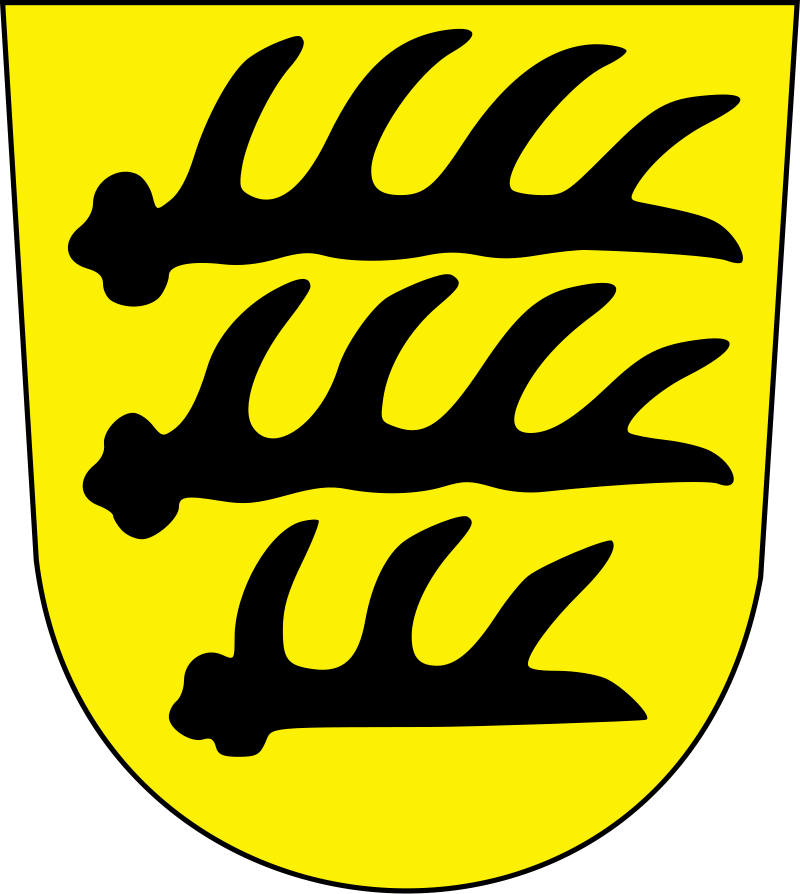County of Württemberg

Nestled in the foothills of the Swabian Alps, the County of Württemberg is a picturesque region of rolling hills, verdant forests, and crystal-clear lakes. The land is dotted with small villages and hamlets, each with its unique character and customs. The people of Württemberg are deeply connected to the land and its spirits, and their rituals and festivals reflect this close relationship.
- Coat of Arms/Flag: The coat of arms of County of Württemberg depicts three black deer antlers on a yellow shield, with a black deer antler as a crest. The flag features a horizontal tricolor of black, yellow, and red.
- Motto: “Wir können alles, außer Hochdeutsch” (We can do everything except speak High German).
- Status: County.
- General Alignment: Neutral.
- Religious affiliations: The people of County of Württemberg worship the old Germanic gods, with a particular emphasis on the goddess Nerthus, who is believed to protect and bless the land.
- Capital City: Stuttgart.
- Other Settlements: Heilbronn, Tübingen, Ulm.
- Common Languages: Middle High German, Swabian dialect.
- Religion(s): Old Germanic paganism.
- Demographics: The population of County of Württemberg is primarily made up of Swabians, with smaller communities of Franconians and Bavarians.
- Government: Feudal monarchy.
- Legislature: Landtag (Assembly).
- Population: Approximately 200,000.
- Notable Places: The Hohenzollern Castle, the Maulbronn Monastery, the Lichtenstein Castle.
- Current Ruler: Count Eberhard III.
- Other Notable Residents: Duke Ulrich, who was exiled from County of Württemberg in the early 16th century, and the poet Friedrich Hölderlin, who was born in Lauffen am Neckar.
- Associated Deities/Saints: Nerthus, Freyja, Odin, Thor.
- Influence/Power: The County of Württemberg is a prosperous region, with fertile lands and a strong economy based on agriculture, trade, and craftsmanship. Its strategic location at the crossroads of important trade routes has also made it a valuable target for neighboring powers.
- Notable Alliances/Enemies: The County of Württemberg has maintained friendly relations with its fellow Swabian states, such as the Free Imperial City of Ulm and the Duchy of Bavaria. However, it has also been involved in numerous conflicts with neighboring states, such as the Margraviate of Baden and the County of Hohenberg.
- Quest Hooks: A group of adventurers is hired by Count Eberhard III to investigate rumors of a bandit gang operating in the hills around Stuttgart. The adventurers discover that the bandits are actually a group of werewolves who have been terrorizing the countryside. The werewolves are being aided by a coven of witches who worship the goddess Nerthus, and are trying to destabilize the county in order to bring about a resurgence of old Germanic paganism.
- Threats: The County of Württemberg is vulnerable to invasion from its more powerful neighbors, particularly the Duchy of Austria and the Margraviate of Baden. It is also home to numerous dangerous creatures, such as trolls, giants, and dragons.
- Treasures/Artifacts: The Hohenzollern Castle is rumored to contain a hidden chamber filled with treasure, including the legendary Amber Room.
- Legendary Creatures/Mythical Entities: The Black Forest is home to many mythical creatures, including the Rübezahl (a giant mountain spirit), the Alp (a vampiric demon), and the Wild Hunt (a ghostly procession of hunters and hounds).
In the heart of the county lies the town of Stuttgart, the political and economic center of the region. The town is built around a medieval castle, which serves as the residence of the Count of Württemberg. The castle’s towers offer stunning views of the surrounding countryside, and its walls are adorned with the coat of arms of the ruling family, depicting a golden deer on a red background.
The town’s streets are lined with timber-framed houses and quaint shops, selling everything from handmade crafts to fresh produce from the surrounding farms. In the center of the town square stands a towering oak tree, which is said to be the home of the local nature spirit, a mischievous creature who is known to grant wishes to those who leave offerings at its roots.
As one travels further into the countryside, they will encounter ancient stone circles, hidden waterfalls, and deep, dark forests, home to a variety of mythical creatures. The forests are said to be haunted by the Wild Hunt, a group of ghostly riders who hunt through the night, led by the god Wotan himself. Werewolves and vampires are also said to roam the land, preying on unsuspecting travelers who stray too far from the safety of the settlements.
Despite the dangers that lurk in the shadows, the people of Württemberg are a resilient and proud folk, with a deep connection to their land and traditions. Their festivals and rituals celebrate the changing seasons, and they pay homage to the spirits of the land and the gods who watch over them. The County of Württemberg is a vibrant and fascinating place, where myth and reality blend together, creating a world that is both enchanting and terrifying.

 Buy me a coffee
Buy me a coffee